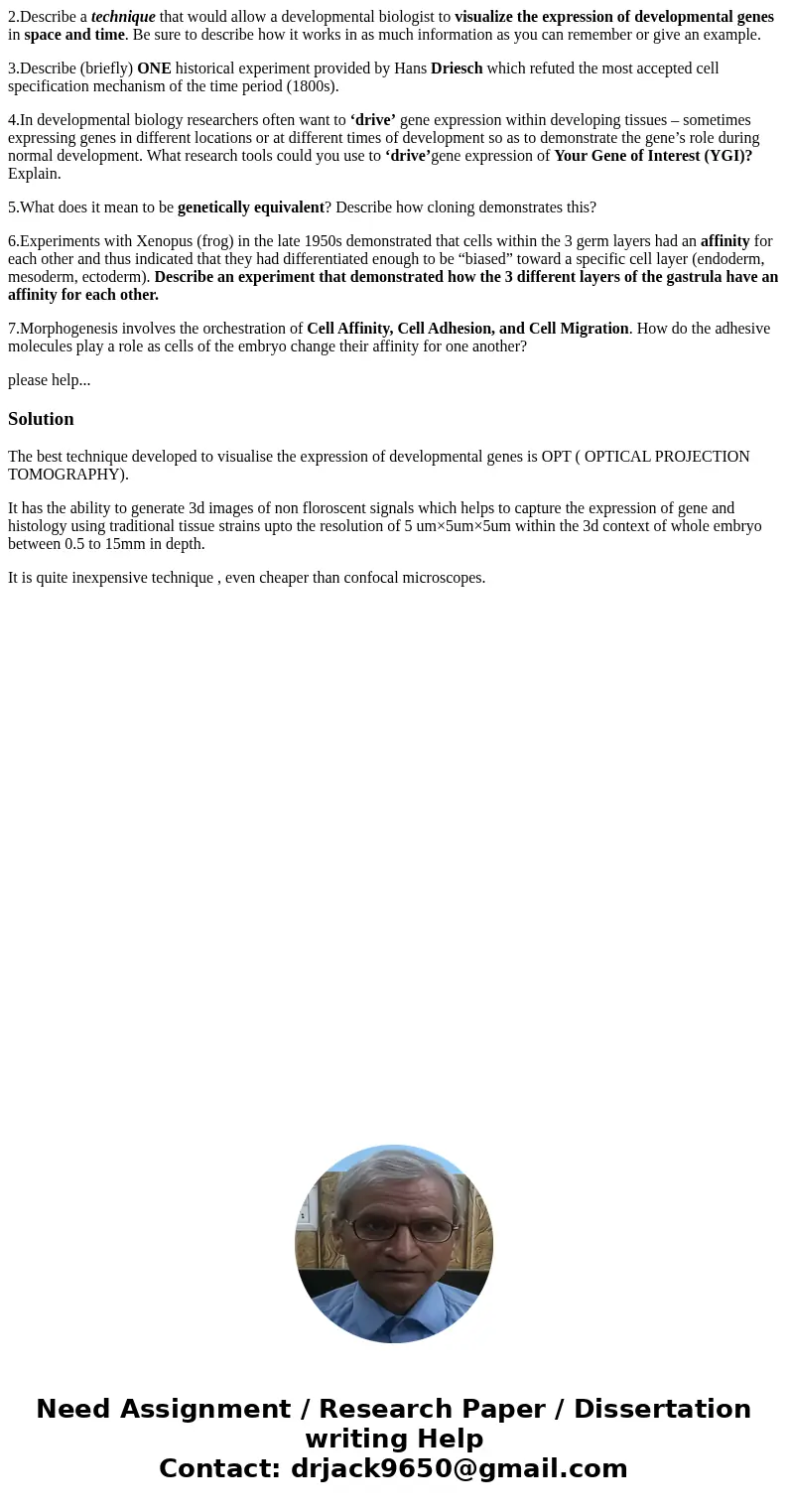2Describe a technique that would allow a developmental biolo
2.Describe a technique that would allow a developmental biologist to visualize the expression of developmental genes in space and time. Be sure to describe how it works in as much information as you can remember or give an example.
3.Describe (briefly) ONE historical experiment provided by Hans Driesch which refuted the most accepted cell specification mechanism of the time period (1800s).
4.In developmental biology researchers often want to ‘drive’ gene expression within developing tissues – sometimes expressing genes in different locations or at different times of development so as to demonstrate the gene’s role during normal development. What research tools could you use to ‘drive’gene expression of Your Gene of Interest (YGI)? Explain.
5.What does it mean to be genetically equivalent? Describe how cloning demonstrates this?
6.Experiments with Xenopus (frog) in the late 1950s demonstrated that cells within the 3 germ layers had an affinity for each other and thus indicated that they had differentiated enough to be “biased” toward a specific cell layer (endoderm, mesoderm, ectoderm). Describe an experiment that demonstrated how the 3 different layers of the gastrula have an affinity for each other.
7.Morphogenesis involves the orchestration of Cell Affinity, Cell Adhesion, and Cell Migration. How do the adhesive molecules play a role as cells of the embryo change their affinity for one another?
please help...
Solution
The best technique developed to visualise the expression of developmental genes is OPT ( OPTICAL PROJECTION TOMOGRAPHY).
It has the ability to generate 3d images of non floroscent signals which helps to capture the expression of gene and histology using traditional tissue strains upto the resolution of 5 um×5um×5um within the 3d context of whole embryo between 0.5 to 15mm in depth.
It is quite inexpensive technique , even cheaper than confocal microscopes.

 Homework Sourse
Homework Sourse